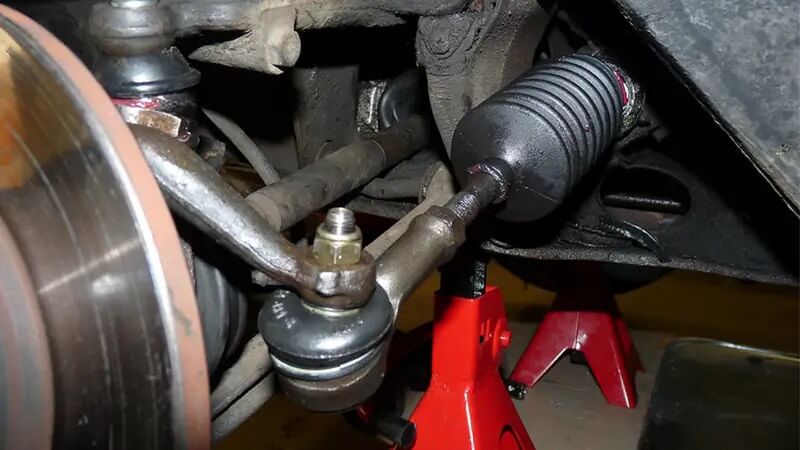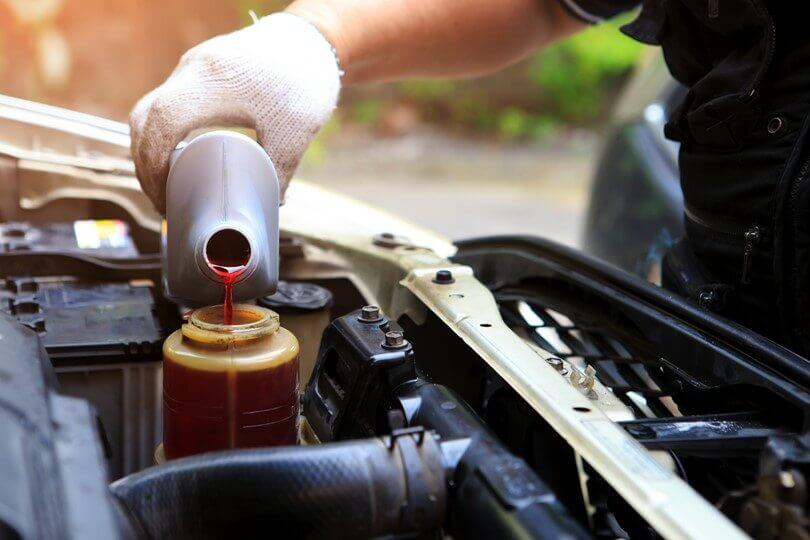If you come to your vehicle and find that the steering wheel turns freely but the wheels do not, you have a steering system problem. In this article, we will tell you the reasons and the solutions why steering wheels turn but tires do not.
When you turn the steering wheel, the input is transmitted through different mechanisms (such as the steering column, steering gear, and eventually the steering arms), causing the wheels to turn in the desired direction.

6 Common Causes of “Steering Wheel Turns, But Wheels Don’t” Issue
The following are some of the most common reasons why the steering wheel turns but the wheels do not:
1. Defective Steering Rack or Gearbox
The rack-and-pinion gear, often known as the steering gearbox, is what interprets steering wheel rotation into sideways wheel movement. The connection between your steering wheel and the wheels can be interrupted if it is damaged or worn out.
2. Faulty Serpentine Belt
A worn serpentine belt could slip or fail, causing the power steering pump to stop running properly. When the power steering pump fails to function properly, you are unable to turn the wheels as desired.
A damaged serpentine belt makes a screaming noise and causes the engine to overheat. These are some of the most serious indications of a worn serpentine belt.
3. Insufficient Tire Pressure
The proper tire pressure is important to the proper operation of your steering wheel. If your steering wheel continues to turn to the right or left without stopping, the PSI level on your tires is either insufficient or high. A vital factor to consider is that tires showing wear in the center have too much pressure. If the wear is on the edges, it means the tires do not have enough PSI.
4. Ineffective Power Steering Pulley or Pump
If the power steering pulley or pump bearings become loose, they can cause problems with the system. The steering wheel becomes too tight to turn and doesn’t function properly as a result.
5. Rack and Pinion Issues
The rack and pinion system, which converts the rotating action of the steering wheel into the lateral rotation of the wheels, can have issues. Leaks or wear in the rack and pinion system might impede effective wheel movement. It is critical to inspect this system for signs of leakage or wear to ensure its functions.
6. Damaged Steering Rack and Tie Rods
The steering rack is a component of the steering mechanism that translates the steering wheel’s rotational motion into linear motion. Tie rods are fastened to the end of the steering rack. The tie rod is connected to a ball socket. They transfer power from the gearbox to the wheel.

If you notice loose steering, a musty odor, or fluid leaks, you may have a malfunctioning steering rack. If you see any signs from above, you must address the issue.
Similar Posts:
Effective Solutions to the Steering Problem
After you’ve recognized the issue, the next step is to fix it. Here are some solutions to the most prevalent issues:
1. Changing out the Steering Rack or Gearbox
Replacement may be the only option if the problem is with the rack, pinion, or steering gearbox. This can be a challenging task; unless you’re not familiar with mechanics, you should leave it to the specialists.
2. Replacement of the Steering Column
A malfunctioning steering column may need repair or replacement. Because of the column’s importance to safe vehicle operation, It’s advised to let professionals handle this job.
3. Examining for Leaks
Examine the power steering system for any leaks. Leaks in hydraulic fluid might result in a loss of power steering assistance. Inspect the power steering fluid reservoir for leaks or low fluid levels. If you find any leaks, you must address them instantly to prevent further harm to the system.
4. Power Steering Pump Testing
The power steering pump helps with steering by providing hydraulic pressure. If the pump fails to function appropriately, it can cause steering wheel problems. To start, check the drive belt for signs of wear or damage before testing the power steering pump. A slack or worn-out belt might affect the pump’s performance.
Additionally, when turning the steering wheel, listen for any strange noises coming from the pump. If you believe that the pump is malfunctioning, it might require replacement or repair. It is important to keep in mind that identifying steering wheel problems can be difficult, and a professional technician may be required for a full check and accurate diagnosis.
5. Examine the Steering Connection
Try to visually discover which of these components is triggering the issue. If you notice any wear and tear with your own eyes, get a replacement. Otherwise, you should see an expert to see if you can’t find any suggestions about damaged parts.
6. Fill the Power Steering Fluid
If your steering fluid runs low, add the correct amount. Also, remember to monitor your fluid level regularly to avoid problems like these on your future trip.

Conclusion
Losing control of your vehicle while driving can be frightening, particularly when you are in the fast lane. When you encounter such a scenario, try to stay calm and gradually bring your car to a stop. You should not continue driving, not even to your technician. You should either pull the car to the maintenance shop or request that the mechanic come to you.


![[FIXED] Steering Wheel Turns, But Wheels Don’t Steering Wheel Turns, But Wheels Don't](https://carstale.com/wp-content/uploads/steering-wheel-turns-but-wheels-dont-1024x428.jpg)